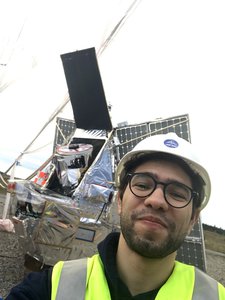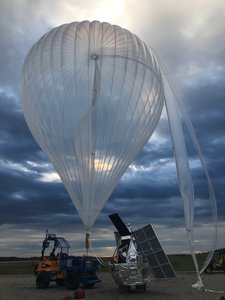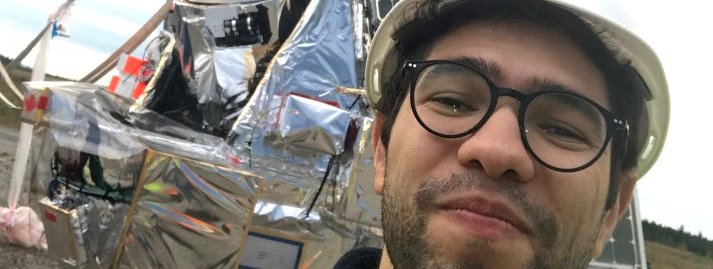PhD Candidate
Observational Cosmology & Instrumentation

Shaaban’s interest in physics began as a naive childhood dream. His earliest memory of wanting to be a physicist dates back to when he was 4 years old when his uncle explained to him that air and oxygen are not the same thing and that there are other components to air beyond oxygen, that fact served as an example of humanity’s ability to learn about the physical world. Since then, Shaaban has developed an obsession with trying to understand the nature of the world we live in. This obsession only grew with time, so when he was lucky enough to be presented with the opportunity to pursue a formal education in physics he took it. Naturally an interest in understanding the world resulted in Shaaban gravitating towards the field that studies the universe as a whole: Cosmology.
During Shaaban’s undergraduate studies, as he began to fall in love with another aspect of the technical world, he found himself attracted to the worlds of software development and hardware machining. So when it came time to choose a graduate institution he knew that he ideally wanted to pursue a program that will allow him to combine his obsession with cosmology with his passion for “building cool things”. This naturally led him to U of T’s state-of-the-art custom balloon spacecraft integration facility run by Professor C. Barth Netterfield and his observational cosmology group.
The most revolutionary discovery in cosmology since Edwin Hubble observed that the universe is expanding is that this expansion is accelerating. This revelation was awarded the 2011 Nobel Prize for its profound implications. An accelerating universe implies that either our understanding of gravity is flawed, or that a mysterious negative pressure known as Dark Energy is driving the expansion of a universe filled with an equally mysterious substance known as Dark Matter. Together, Dark Energy and Dark Matter account for over 95% of the contents of the observable universe, however their origin and physics are presently unknown. As a result, the nature of Dark Energy and Dark Matter are considered two of the greatest mysteries of modern science.
High-resolution astronomical imaging is a powerful tool to probe the nature of Dark Energy and Dark Matter. Images with sufficient resolution for cosmological applications are traditionally obtained using space-based observatories, as ground-based imaging suffers from limited resolutions due to the random refraction of light by the turbulent atmosphere. The demand for near-infrared to near-ultraviolet space-based imaging cannot be met by existing and planned space missions. This overwhelming and increasing demand can be directly addressed by utilizing scientific balloon-borne platforms that provide access to space-quality imaging without the prohibitive cost and long development timescale of traditional space missions. The low cost and repeatability of a balloon launch enable the platform to fly annually to meet the high demand, while the short development time scales ensure that the platform remains state of the art. Such a platform permanently reduces the cost of astronomical observations, which will improve the accessibility of astronomy to a wider and more diverse range of research groups, thus increasing the field's research output. Shaaban is currently working on SuperBIT. This Canada-led project is the first of its kind, allowing the Canadian scientific community to compete and collaborate with multi-billion dollar experiments, such as the Hubble Space Telescope, at extremely low cost. Shaaban’s research focuses on building, and utilizing low cost spacecrafts such as balloon-borne payloads and small satellites to probe the nature of Dark Matter and Dark Energy.
Shaaban is native to Alexandria, Egypt. Growing up he moved a lot and he has lived in multiple cities across Egypt, United Arab Emirates, Italy, Canada, and Germany. He has also had the privilege to visit over 130 cities in over 30 countries trying at least one ice-cream store per city. His favourite place on earth is Vancouver, BC but he is now forced to pretend it is Toronto!
Besides his interest in physics and mathematics, he is passionate about the outdoors. He is a very active individual with a love for sports, especially long-distance running and weightlifting. In his free time, he enjoys reading about mysterious things, especially with regard to psychology, history, computing, philosophy, and finance. He is very involved in leadership development, public speaking, and debate. He is also a foodie who enjoys cooking as well as an avid lover of anime, Japanese animated series.

(Left: SuperBIT, on the launch pad preparing for its final engineering test flight in September 2019 out of Timmins Ontario.)

